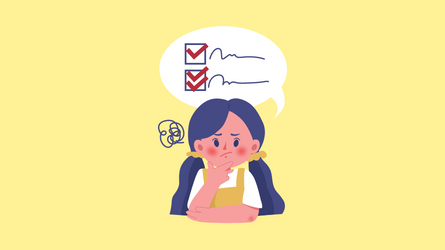OCD treatment for kids: What parents need to know
by Joyce Li, Ph.D., C.Psych.
Posted: September 15, 2022
Obsessive-compulsive disorder (OCD) is a mental health condition characterized by intrusive, persistent thoughts or urges (obsessions) and ritualized behaviours that bring relief (compulsions). OCD can occur at any age, but typically first appears between the ages of 8 to 12. OCD is diagnosed when this pattern of obsessions and compulsions significantly impacts the child or teen’s quality of life, takes up significant amounts of time, and causes distress.
OCD can negatively affect a person’s mood, their ability to engage in activities that are important to them, and their relationships with others. Thankfully, OCD is a treatable condition, with the majority of people benefitting from psychotherapy and/or medication.
It is important to find a clinician who can accurately assess and effectively treat OCD. Here is a brief overview of what OCD treatment looks like in our clinic.
Starting with an assessment
Prior to establishing a treatment plan, the psychologist will conduct an assessment. During the assessment, the psychologist will meet with you in person or online, learn more about your child and family, what their symptoms are, and how their symptoms are impacting their everyday life. This process will involve an interview with the youth and caregivers; it may also include some questionnaires to complete. The assessment may establish or confirm a diagnosis of OCD and/or other mental health conditions. The assessment provides information needed to develop a treatment plan. It also provides a baseline against which to measure progress.
Exposure and response prevention (ERP)
Research shows that the most effective treatments for OCD are cognitive-behavioural therapy (CBT) and/or medication. Exposure and response prevention (ERP) is a type of CBT that is considered the “gold standard” treatment for OCD.
At the start of treatment, the child/teen will meet with the psychologist in person or online. During this early stage, the psychologist will aim to build a positive connection with the youth and establish motivation for the rest of treatment. The youth will learn more about OCD and specifically about their own obsessions and compulsions. They will learn that the OCD is not their (or anyone else’s) fault.
In ERP treatment, the youth learns how to face their fears or uncomfortable feelings (exposure) without engaging in compulsions (response prevention). Through a series of gradual, planned tasks, they learn that they do not need to perform behaviours in order to make the intrusive thoughts or not-right feelings go away. We call this “breaking OCD’s rules”: OCD can have many rules that it wants the youth to follow in order to prevent a feared outcome or a bad feeling, and the youth will develop the ability to determine their own behaviour, rather than following all of OCD’s rules.
The youth will complete ERP tasks in session with the therapist, and will identify tasks to complete at home in between sessions, as well.
Establishing and maintaining motivation
Some children and teens are initially reluctant to engage in therapy, which is very understandable; an individual with OCD may find the idea of facing their fears and not engaging in rituals to be very frightening or uncomfortable.
Caregivers (and youth) should know that ERP treatment is conducted in a gradual, collaborative manner. The child or teen plays an active role in determining what exposure tasks to complete, and they are never forced to do something they do not want to do. A skilled therapist can help the client find motivation to engage in treatment by making sure they understand the purpose of ERP and by creating an environment for therapy that is encouraging, empowering, and fun. The biggest boost to motivation happens when the client develops an increasing sense of control over their OCD, rather than OCD controlling them.
Family involvement
In our clinic, we work closely with parents/caregivers for two main reasons. First, we know that when a child has OCD, the whole family is impacted. OCD can be upsetting for loved ones to witness, upend family routines, and add strain to sibling, parent, and co-parent relationships. We know that parents/caregivers can benefit from support to better understand OCD and cope with challenges.
Second, we know that treatment works best when parents/caregivers are active participants in the process. They provide support for ERP “homework”, set limits for how much OCD is going to impact the household, help coach their child through challenging moments, and provide feedback to the treatment team on progress. Our psychologists can work with parents to make sure they feel confident in their ability to support their child’s OCD treatment at home.
Collaborating with other service providers
Our psychologists work with families to determine what other individuals or services need to be involved in the treatment process. For example, it can be very helpful to work with a child’s school to establish ways to support that student’s wellbeing in the classroom, or to develop exposure tasks that can be completed at school. We also frequently collaborate with family doctors, pediatricians, and psychiatrists on a treatment plan and share progress updates.
How long does it take?
In outpatient settings (like a community mental health clinic or private practice), ERP treatment typically involves meeting with the therapist weekly for a 50-minute session, for 12 to 16 weeks. The length of treatment and frequency of sessions can vary depending on the client’s needs. When symptoms have diminished significantly, the therapist and family may decide to move to less frequent “booster” sessions to check in and maintain progress. (See here for information about other treatment formats, like inpatient care, day treatment, or summer camps.)
Further reading
Helping a child with obsessive-compulsive disorder, Harvard Health Publishing
For parents & families, International OCD Foundation

